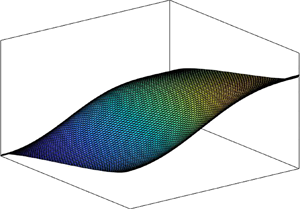Article contents
Purely elastic instabilities in the airways and oral area
Published online by Cambridge University Press: 06 October 2021
Abstract

The present study considers a shear-thinning viscoelastic liquid layer sheared by the air and flowing past a deformable-solid layer in the presence of a surfactant at the air–liquid interface to model the airflow in the oral area and airways. The stability analysis reveals the existence of purely elastic and unconditionally unstable ‘liquid elastic’ and ‘solid elastic’ modes. The mechanism responsible for the destabilisation of the solid elastic mode is the shear stresses exerted by the air on the liquid and by the liquid on the deformable solid while for the liquid elastic mode, the mechanism is the first normal stress difference across the air–liquid interface. The liquid and solid elastic modes undergo resonance, resulting in the ‘resonance mode’ of instability. The resonance mode exhibits a much higher growth rate than the liquid and solid elastic modes. The shear-thinning characteristic of the liquid and presence of the surfactant leads to enhancement in the growth rate of the resonance mode. An estimate shows a good correlation between the exhaled fluid particle (i.e. droplets and aerosols) diameters and the wavelength of the perturbations with maximum growth rate. In essence, the present analysis predicts that the airflow in the airways and oral area could lead to an elastic instability arising due to the elastic nature of the saliva, mucus and underlying muscle layers.
- Type
- JFM Papers
- Information
- Copyright
- © The Author(s), 2021. Published by Cambridge University Press
References
REFERENCES
- 3
- Cited by



